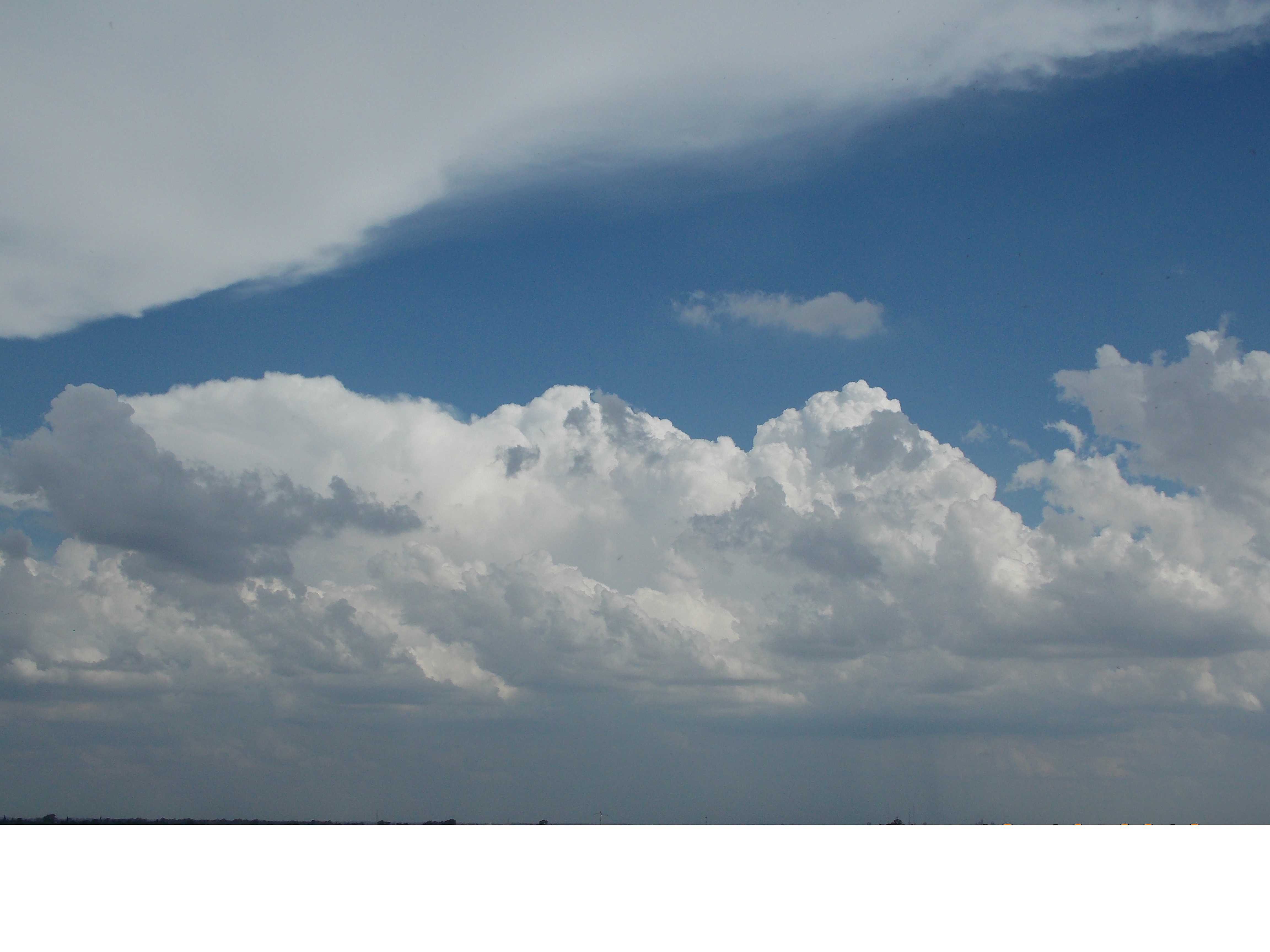© Victor Oviedo
Colón Department, Cordoba, Argentina
Latitude: 31° 11' 24'' S
Longitude: 64° 7' 48'' W
18 December 2013 1934 (Local Time)
Camera direction: towards SE
Image P/S code: S.10.2
Image I.D.: 5809
CL = 9, CM = 0, CH = 3
-

Cumulonimbus capillatus incus and calvus
This photograph illustrates a progression from Cumulus to Cumulonimbus. On the right are the small protuberances and sproutings typical of Cumulus mediocris, and then the stronger outlines, greater vertical extent and cauliflower-like appearance of the bulging upper parts of Cumulus congestus. In the centre, the upper parts of the cloud are becoming indistinct and flattened and have the appearance of a whitish mass without sharp outlines, which is typical of Cumulonimbus calvus. On the left, the cloud has taken on a fibrous appearance, having developed into Cumulonimbus capillatus. The anvil (incus) is just visible on the left-hand edge, but is mostly obscured by the grey cloud. Overhead, as a result of the spreading out of an anvil, a dense layer of Cirrus spissatus cumulonimbogenitus has formed.
Links in the image description will highlight features on the image. Mouse over the features for more detail.
© Victor OviedoColón Department, Cordoba, ArgentinaLatitude: 31° 11' 24'' SLongitude: 64° 7' 48'' W18 December 2013 1934 (Local Time)Camera direction: towards SECL = 9, CM = 0, CH = 3Image P/S code: S.10.2Image I.D.: 5809Cumulonimbus capillatus praecipitatio
Cumulonimbus is a heavy and dense cloud of considerable or great vertical extent, in the form of a mountain or huge towers. At least part of its upper portion is usually smooth, fibrous or striated, and is nearly always flattened. In this zoomed image, most of the sproutings of the upper parts are becoming fibrous and indistinct at 1 and 2 as they transition from Cumulonimbus calvus to the species capillatus. The overall look of the upper parts is still one of bulging domes, but no anvil (incus) has yet developed. Capillatus is usually accompanied by precipitation in the form of a shower (the supplementary feature praecipitatio), seen here on the lower right 15 to 20 km away. Near the top of the highest tower is a small patch of Altocumulus cumulonimbogenesis. Also in this image are the cauliflower-like sproutings of Cumulus congestus, some Cumulus mediocris and probable Cumulus fractus, which appears closer to the camera due to perspective.
Links in the image description will highlight features on the image. Mouse over the features for more detail.
© Jarmo KoistinenEspoo, FinlandLatitude: 60° 12' 11'' NLongitude: 24° 38' 30'' E05 September 2015 1737 (Local Time)Camera direction: towards NECL = 9, CM = 6, CH = 0Image P/S code: P.10.2Image I.D.: 5500
